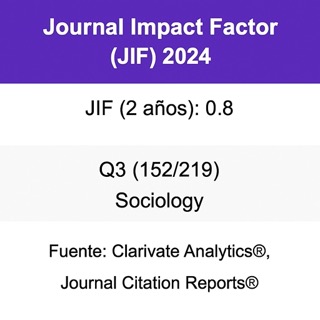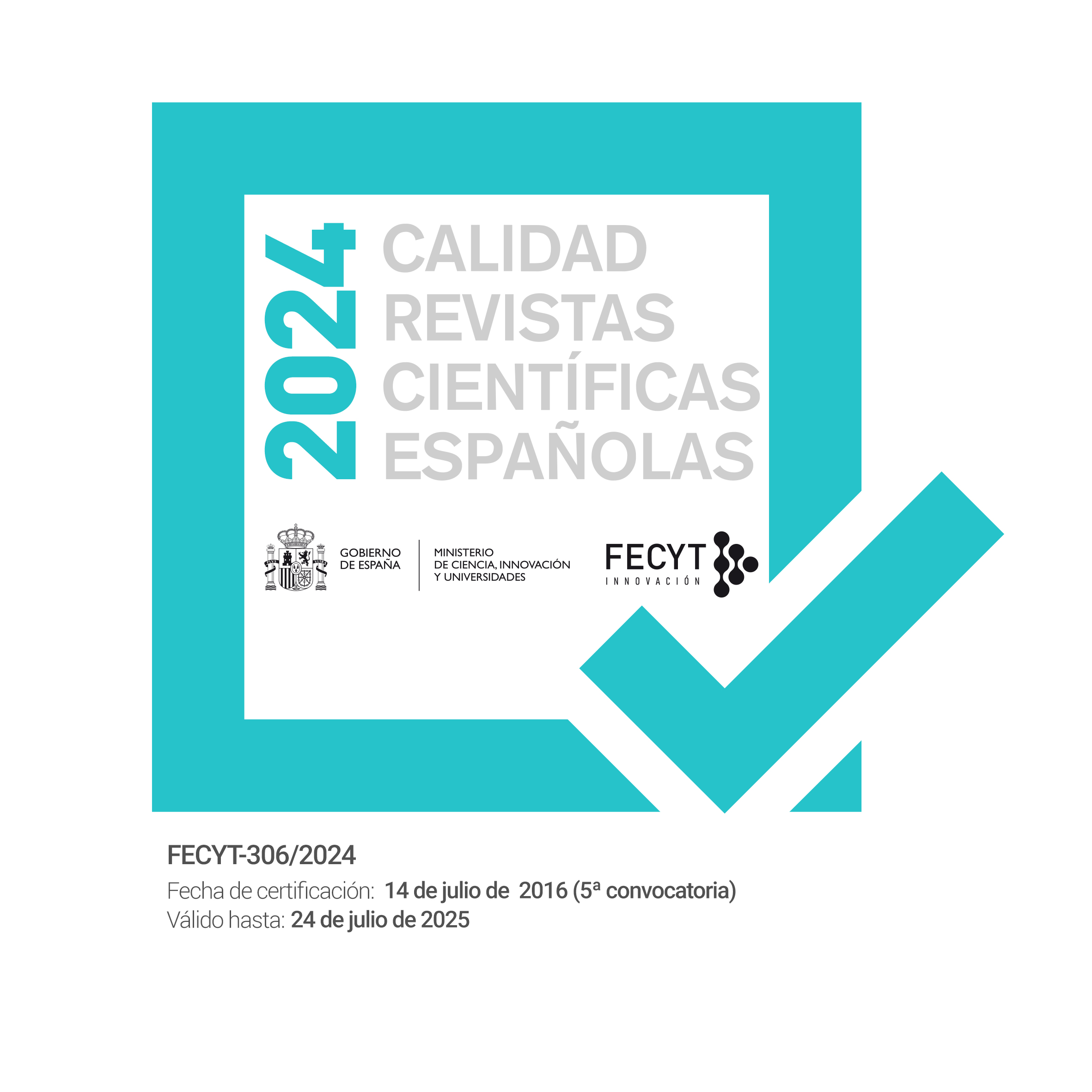Imágenes de la postvención del suicidio en España: metáforas, símbolos y discursos terapéuticos en las asociaciones de supervivientes
DOI:
https://doi.org/10.22325/fes/res.2023.194Palabras clave:
Lenguaje, metáfora, postvención, suicidio, terapiaResumen
La postvención —la atención a allegados tras un suicidio— es un ámbito que se viene organizando y desarrollando con notoria fuerza en los últimos años en España por parte de asociaciones de supervivientes y de profesionales. Si bien de influencia política aún moderada, la emergencia de estas organizaciones representa un factor clave en la articulación de estrategias de contención de las conductas suicidas según recomienda, entre otras entidades, la Organización Mundial de la Salud. Con todo, el interés que suscitan dichas asociaciones está en no sólo en la problematización cívica del suicidio, sino en las estrategias terapéuticas comunitarias y extra-institucionales para afrontarlo. Por tanto, desde un examen cultural-estructural de la terapia y un enfoque metodológico de la Sociología Visual y la Semiótica, este trabajo observa la relevancia de un particular y plástico uso del lenguaje en la conformación de un marco “cívico-terapéutico” de las asociaciones de supervivientes en España.
Citas
AFSP (2010). Surviving a Suicide Loss: Resource and Healing Guide. New York: AFSP. https://www.in.gov/doe/files/afsp.resource-healing-guide.pdf
Andriessen, K. (2004). Suicide survivor activities, an international perspective. Suicidologi, 9(2), 26-31. http://doi.org/10.5617/suicidologi.1883
Andriessen, K. (2009). Can postvention be prevention?. Crisis, 30, 43-47. https://doi.org/10.1027/0227-5910.30.1.43
Andriessen, K., Krysinska, K., Kõlves, K., & Reavley, N. (2019). Suicide Postvention Service Models and Guidelines 2014–2019: A Systematic Review. Frontiers in Psychology, 10. https://doi.org/10.3389/fpsyg.2019.02677
Baudelot, C., & Establet, R. (2008). Suicide. The Hidden Side of Modernity. Cambridge: Polity Press.
Blanco, C. (2020). El suicidio en España. Respuesta institucional y social. Revista de Ciencias Sociales, 33(46), 79-106. https://doi.org/10.26489/rvs.v33i46.5
Buck-Morss, S. (2009). Estudios Visuales e Imaginación Global. Antípoda, (9), 19-46. https://www.redalyc.org/pdf/814/81413110002.pdf
Button, M. E., & Marsh, I. (2020). Introduction. In M. E. Button, & I. Marsh (Eds.), Suicide and Social Justice. New Perspectives on the Politics of Suicide and Suicide Prevention (pp. 1-12). New York/London: Routledge.
Castillo Patton, A. E. (2022). Contención del suicidio en España: evaluación del diseño de las políticas y Planes de Salud Mental de las Comunidades Autónomas. Gestión y Análisis de Políticas Públicas, (28), 6-26. https://doi.org/10.24965/gapp.i28.10956
Chandler, A. (2020). Socioeconomic inequalities of suicide: Sociological and psychological intersections. European Journal of Social Theory, 23(1), 33-51. https://doi.org/10.1177/1368431018804154
De Miguel, J. M. (1980). Introducción al campo de la antropología médica. In M. Kenny y J. de Miguel (Comp.), La antropología médica en España (pp. 11-43). Barcelona: Anagrama.
De Saussure, F. (1916/1945). Curso de lingüística general. Buenos Aires: Losada.
Farberow, N. L. (1998). Suicide survivor programs in IASP member countries: A survey. In R. J. Kosky, H. S. Eshkevari, R. D. Goldney, & R. Hassan (Eds.), Suicide prevention: The global context (pp. 293-297). New York/London: Plenum Press.
Foucault, M. (1963/2018). El nacimiento de la clínica. Una arqueología de la mirada médica. Madrid: Siglo XXI Editores.
Foucault, M. (1981/2008). Tecnologías del yo y otros textos afines. Barcelona: Paidós.
Foucault, M. (1982/1988). El sujeto y el poder. Revista Mexicana de Sociología, 50(3), 3-20. https://doi.org/10.2307/3540551
Foucault, M. (2003/2005). El poder psiquiátrico. Curso del Collège de France (1973-1974). Madrid: Akal.
García-Haro, J., García-Pascual, H., González González, M., Barrio-Martínez, S., y García-Pascual, R. (2020). Para pensar el suicidio más allá de la enfermedad y los diagnósticos: un enfoque contextual-fenomenológico. Norte de salud mental, 16(62), 42-51. https://dialnet.unirioja.es/servlet/articulo?codigo=7240539
Grupo de Trabajo de la Guía de Práctica Clínica de Prevención y Tratamiento de la Conducta Suicida (2012). Guía de Práctica Clínica de Prevención y Tratamiento de la Conducta Suicida. Avalia-t. https://portal.guiasalud.es/wp-content/uploads/2020/09/gpc_481_conducta_suicida_avaliat_resum_modif_2020_2.pdf
Hine, C. (2000). Etnografía virtual. Barcelona: UOC.
Illouz, E. (2008/2010). La salvación del alma moderna. Terapia, emociones y la cultura de la autoayuda. Buenos Aires/Madrid: Katz.
Jackson, J. (2015). SOS. Sobrevivientes de un Suicida. Manual para Enfrentar el Suicidio de un Ser Querido. Washington D.C.: AAS. https://suicidology.org/wp-content/uploads/2019/07/SOS_Espanol.pdf
Jakobson, R. (1981/1985). Lingüística y poética. Madrid: Cátedra.
Jenks, C. (1995/2017). The Centrality of the Eye in Western Culture. An Introduction. In C. Jenks (Ed.), Visual Culture (pp. 1-25). New York/London: Routledge. https://doi.org/10.4324/9780203426449
Jordan, J. R. (2017). Postvention is prevention. The case for suicide postvention. Death Studies, 41(10), 614-621. https://doi.org/10.1080/07481187.2017.1335544
Lakoff, G., & Johnson, M. (1980/2003). Metaphors we live by. Chicago: The University of Chicago Press.
Le Guern, M. (1980/1985). La metáfora y la metonimia. Madrid: Cátedra.
Lizcano, E. (2006). Metáforas que nos piensan. Sobre ciencia, democracia y otras poderosas ficciones. Madrid: Ediciones Cero/Traficantes de Sueños.
Lizcano, E. (2011). Hablar por metáfora. La mentira verdadera o la verdad mentirosa de los imaginarios sociales. In L. Garagalza Arrizabalaga (Coord.), Filosofía, Hermenéutica y Cultura: Homenaje a Andrés Ortiz-Osés (pp. 145-166). Bilbao: Servicio de Publicaciones de la Universidad de Deusto.
Mittelmann, J. (2000). Lenguaje y pensamiento. El Cours de Saussure y su recepción crítica en Jakobson y Derrida. Pamplona: Servicio de Publicaciones de la Universidad de Navarra.
O'Neill, J. (1986). Sociological Nemesis: Parsons and Foucault on the Therapeutic Disciplines. In M. L. Wardell, & S. P. Turner (Eds.), Sociological Theory in Transition (pp. 21-35). New York/London: Routledge.
OMS (2000). Prevención del suicidio. ¿Cómo establecer un grupo de supervivientes?. Geneva: WHO Press.
OMS (2019). Preventing suicide. A community engagement toolkit. Geneva: WHO Press.
OMS, & IASP (2008). Preventing Suicide How to Start a Survivors’ Group. Geneva: WHO Press.
OPS, y OMS (2014). Prevención del suicidio: un imperativo global. Geneva: WHO Press.
Orgaz Alonso, C. S., y Amezaga Etxebarria, A. (2018). Cien años de suicidios en España: análisis de la construcción del dato estadístico. En A. Serrano Maíllo (Ed.), Anomia, cohesión social y moralidad. Cien años de tradición durkheimiana en criminología (pp. 55-80). Madrid: Dykinson.
Parsons, T. (1951). Illness and the role of the physician: A sociological perspective. American Journal of Orthopsychiatry, 21(3), 452-460. https://doi.org/10.1111/j.1939-0025.1951.tb00003.x
Pauwels, L. (2010). Visual Sociology Reframed: An Analytical Synthesis and Discussion of Visual Methods in Social and Cultural Research. Sociological Methods & Research, 38(4), 545-581. https://doi.org/10.1177/0049124110366233
Roca Soriano, F. (1998). Los “desconocidos” grupos de ayuda mutua. Cuadernos de Trabajo Social, (11), 251-263. https://dialnet.unirioja.es/servlet/articulo?codigo=119494
Rodríguez, F. (2016). Biopoder y Hermenéutica del Sí mismo en el espacio médico. Espacio Abierto, 25(4), 285-297. https://produccioncientificaluz.org/index.php/espacio/article/view/22025
Rose, N. (2007). Terapia y poder. Techné y Ethos. Archipiélago: Cuadernos de crítica de la cultura, (76), 101-124.
Serrano, A.; Fernández, C. J., y Artiaga, A. (2012). Ingenierías de la subjetividad: el caso de la orientación para el empleo. Revista Española de Investigaciones Sociológicas, 138, 11-32. https://doi.org/10.5477/cis/reis.138.41
Serrano, A., y Zurdo, Á. (2012). Investigación social con materiales visuales. In M. Arroyo, e I. Sádaba (Coords.), Metodología de la investigación social: técnicas innovadoras y sus aplicaciones (pp. 217-250). Madrid: Síntesis.
Shneidman, E. (1975). Postvention: The care of the bereaved. In Robert O. Pasnau (Ed.), Consultation-liaison psychiatry: Seminars in Psychiatry (pp. 245-256). New York: Grune & Stratton.
Villa, M. E. (2018). Las metáforas en la lingüística. Análisis de algunas conceptualizaciones metafóricas de los fenómenos lingüísticos. Círculo de Lingüística Aplicada a la Comunicación, 73, 303-314. http://doi.org/10.5209/CLAC.59071
Publicado
Cómo citar
Número
Sección
Licencia
Derechos de autor 2023 Andy Eric Castillo Patton

Esta obra está bajo una licencia internacional Creative Commons Atribución-NoComercial 4.0.
Todas las publicaciones de la Revista Española de Sociología se realizarán bajo una licencia abierta Creative Commons de Reconocimiento 4.0 Internacional (CC BY 4.0). Dicha licencia establece que los autores son los poseedores de los derechos de propiedad intelectual de sus trabajos, que pueden redistribuirse a cambio de un reconocimiento adecuado. Para más información de la licencia Creative Commons, consultar aquí.
Una vez aceptado un artículo para su publicación, la Revista Española de Sociología solicitará al denominado "autor para la correspondencia" la aceptación de una licencia obligatoria Creative Commons incluida en un acuerdo o contrato de publicación.




